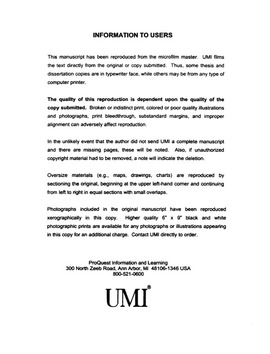| dc.contributor.advisor | Reed, W. Robert, | en_US |
| dc.contributor.author | Hepner, Mickey Alden. | en_US |
| dc.date.accessioned | 2013-08-16T12:18:22Z | |
| dc.date.available | 2013-08-16T12:18:22Z | |
| dc.date.issued | 2001 | en_US |
| dc.identifier.uri | https://hdl.handle.net/11244/356 | |
| dc.description.abstract | This study also calculates the family structure incentives present in welfare policy. Contrary to previous work, the author assumes that a couple has three potential family structures: marriage, cohabitation reported to transfer agencies, and unreported cohabitation---cohabitation concealed from transfer agencies. The study finds that there are large payoffs to concealing cohabitation. In some instances, the couple could nearly double their resources with unreported cohabitation compared to marriage.* | en_US |
| dc.description.abstract | Oklahoma's tax and transfer system creates a framework which, at times, provides very little payoff for work. This study incorporates a more complete set of tax and transfer programs than were used in previous research, including state-specific programs such as childcare subsidies and child support. The inclusion of childcare subsidies is notable because they are often ignored in previous research, yet they have large impacts on work and family structure incentives. Generally, the study finds effective tax rates in the upper range of those reported elsewhere, typically above 90% and at times approaching 300% when a recipient loses eligibility for a childcare subsidy. Next, this study tested the effectiveness of financial incentives (a lower effective tax rate), conditional on the presence of work requirements, at increasing labor force participation and earnings. From a sample of female heads of households in Oklahoma's two most populous cities, the study finds that financial incentives, conditional on the presence of work requirements, may not be effective at increasing labor force participation or earnings. | en_US |
| dc.description.abstract | *This dissertation includes a CD that is compound (contains both a paper copy and a CD as part of the dissertation). The CD requires the following application: Microsoft Office. | en_US |
| dc.description.abstract | This study seeks to analyze the work and family structure incentives created by Oklahoma's tax and transfer system. By focusing on Oklahoma, the author can include detailed information on programs specific to this state, and develop a much deeper understanding of the incentives generated by welfare policy. There are two objectives for this study: (1) determine the magnitude of the work and family structure incentives faced by transfer recipients in Oklahoma, and (2) empirically estimate the behavioral response to financial incentives for TANF recipients. | en_US |
| dc.format.extent | x, 198 leaves : | en_US |
| dc.subject | Transfer payments Oklahoma. | en_US |
| dc.subject | Welfare recipients Employment Oklahoma. | en_US |
| dc.subject | Public welfare Oklahoma. | en_US |
| dc.subject | Sociology, Public and Social Welfare. | en_US |
| dc.subject | Welfare recipients Taxation Oklahoma. | en_US |
| dc.subject | Tax incentives Oklahoma. | en_US |
| dc.subject | Economics, Labor. | en_US |
| dc.title | An analysis of the work and family structure incentives generated by Oklahoma's tax and transfer system. | en_US |
| dc.type | Thesis | en_US |
| dc.thesis.degree | Ph.D. | en_US |
| dc.thesis.degreeDiscipline | Department of Economics | en_US |
| dc.note | Adviser: W. Robert Reed. | en_US |
| dc.note | Source: Dissertation Abstracts International, Volume: 62-06, Section: A, page: 2199. | en_US |
| dc.note | Includes supplementary digital materials. | en_US |
| ou.identifier | (UMI)AAI3019232 | en_US |
| ou.group | College of Arts and Sciences::Department of Economics | |
